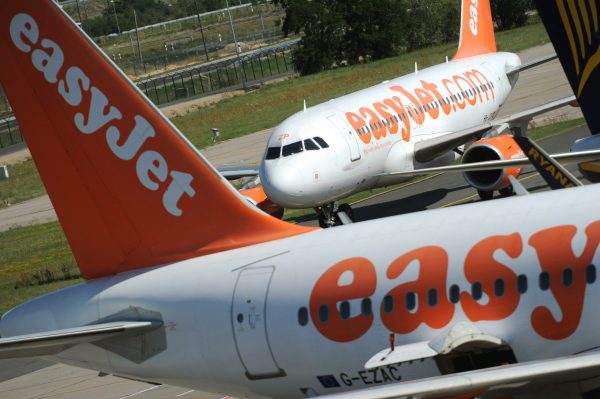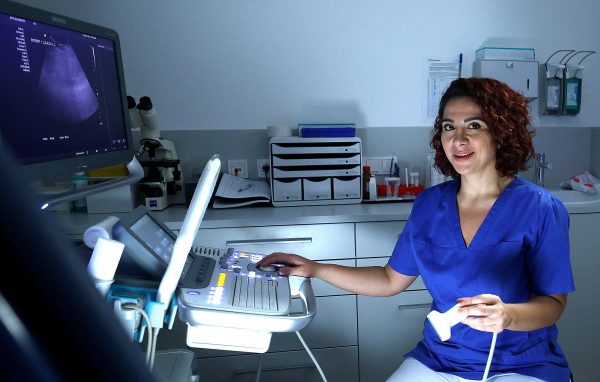
Teacher, author and Director of Primary Education of Lasithi, Manolis Makrakis, announced today an important archaeological discovery.
An ancient water pipeline was discovered, as he announced, in the framework of the works for the opening of the road that will connect the North Crete roadway with the airport of Kasteli. The pipeline, as Mr. Makrakis notes in his post, carried water from Kalo Chorio and Krasi to Hersonisos.
In detail in his post, which he accompanies with photos, Mr. Makrakis states the following:
The ancient water aquaduct pipeline has come to light
My dear friends, have a good month! It is with great pleasure that I present to you today the newly-revealed by the archaeological service pipeline. The section of the pipeline is located 500 meters south of the national road of Hersonissos and came to light, as part of the works for the opening of the road that will connect the North Crete Roadway with the airport of Kastelli. The pipeline carried water from Kalo Chorio and Krasi to Hersonisos. It consists of two parts, an open section (groove) with width of approx. 40 cm and a clay (enclosed) pipeline with a diameter of approx. 25 cm. We are waiting for more information from the archaeological service. Next, I am quoting an excerpt from my book “History of Crete” about the Aqueduct of Hersonisos, part of which was the pipeline.

The Hersonissos aqueduct
The aqueduct of Hersonissos was a great work of the Roman era. The Romans were leaders in similar projects. Because the morphology of the land consists of hills and dales, they made the necessary works with aquaducts so that the water flows smoothly in the groove above the bridges. In many places this groove was supported by wall constructions.
Its length was 14 km, it took the water from two sources located at a great distance from each other. The first source was located at the “Leontari” location in Krasi, while the second one was 3 kilometers south of the tap of the community reservoir of Kalos Horio Pediados. Then the two pipelines merged into one that ended up in Hersonisos. The transport capacity of the pipeline was twice that of Lyktos. The pipeline passed through gullies, ravines and steep (inclined) slopes), through the uneven surfaces of the mountains and ended at the Peninsula. The water of the pipeline was collected in a very large tank located on a hill south of the Port of Hersonisos at the “Palatia” location. This covered vaulted tank was 58 m long, 22 m wide and 5.5 m deep. The 4.5m underground section was carved out of natural rock. The thickness of the western walls was 1.60 m. There was a partition with arches (like that of Aptera) to reduce the pressure and hold the domes. They are preserved almost intact. From this tank, the water reached Hersonisos through clay pipes. In ancient Hersonisos, where the water reached, it quenched the thirst of the inhabitants and beautified the city by falling from small marble waterfalls, to the beautiful fountains* with the mosaics that decorated the city. Ruins of two large water bridges of that aqueduct can be seen today NW of the village of Potamies, at the place called Xerokamares, as well as on the route Kasteli – Hersonisos, also at Xerokamares. They were called Xerokamares from the ruins of the water bridge “Xeres Kamares=Kamares, i.e. bridges without water, dilapidated, broken down, as a result, the groove on top of them that carried the water has also collapsed.

sources:
1. Makrakis Manolis, History of Crete, 2021, edition of the Region of Crete
2. Nikolaos Oikonomakis, the aqueduct of Lyttos, period. Lyktos, vol. 1, pp. 66-69, Heraklion 1984)
3. Sythiakaki-Kritsimalli Vasiliki, Monumental topography of the area of the Municipality of Hersonisos, in the book “Hersonisos during the Ages” published by the Municipality of Hersonisos, pub. Epohi 1999-2002
Latest News

Rhodes Airport Tops Fraport Greece’s Regional Airports in 2024 Performance
According to Fraport's data, more than 35 million passengers (specifically 35.2 million) were handled by Fraport-managed airports during the 11 months.

European Central Bank Cuts Interest Rates by 25 Basis Points
It is the fourth cut of interest rates by Europe’s central bank, a move expected by the markets and financial analysts leading to the rate settling at 3%.

Airbnb: New Measures Add €600 in Extra Costs for Property Owners
Property managers face an immediate administrative fine of 5,000 euros if access to the inspected property is denied or any of the specified requirements are not met.

Economist: Greece Included in the Best Performing Economies in 2024
Meanwhile, Northern European countries disappoint, with sluggish performances from the United Kingdom and Germany.

EasyJet Expands Its Routes from Athens
The airline’s two new routes will be to London Luton and Alicante and they will commence in summer 2025.

Capital Link Forum Highlights Greece’s Economic Resurgence; Honors BoG Gov Stournaras
Capital Link Hellenic Leadership Award recipient, Bank of Greece Gov. Yannis Stournaras, an ex-FinMin, was lauded for his pivotal role during Greece’s economic recovery

Tourist Spending in Greece Up by 14%, Visa Card Analysis Shows
Greece’s capital Athens emerged as the most popular destination, recording a 17% increase in transactions with Visa cards, surpassing even the cosmopolitan island of Mykonos.

Inflation in Greece Unchanged at 2.4% in Nov. 2024
The general consumer price index (CPI) posted a 0.4% decrease in November compared to the previous month

2024 Christmas Holidays: Extended Shop Hours Schedule
The 2024 Christmas Holidays extended shop hours schedule commences on Thursday, December 12 and runs until the end of the year.

ELSTAT: Seasonally Adjusted Unemployment Down in October
The number of employed individuals reached 4,284,694, an increase of 67,723 compared to October 2023 (+1.6%) and 22,002 compared to September 2024 (+0.5%).















![Fraport: Πάνω από 35 εκατ. επιβάτες στα αεροδρόμια το 11μηνο – Πτώση στη Μύκονο [πίνακας]](https://www.ot.gr/wp-content/uploads/2022/06/fraport-90x90.jpg)



























 Αριθμός Πιστοποίησης Μ.Η.Τ.232433
Αριθμός Πιστοποίησης Μ.Η.Τ.232433